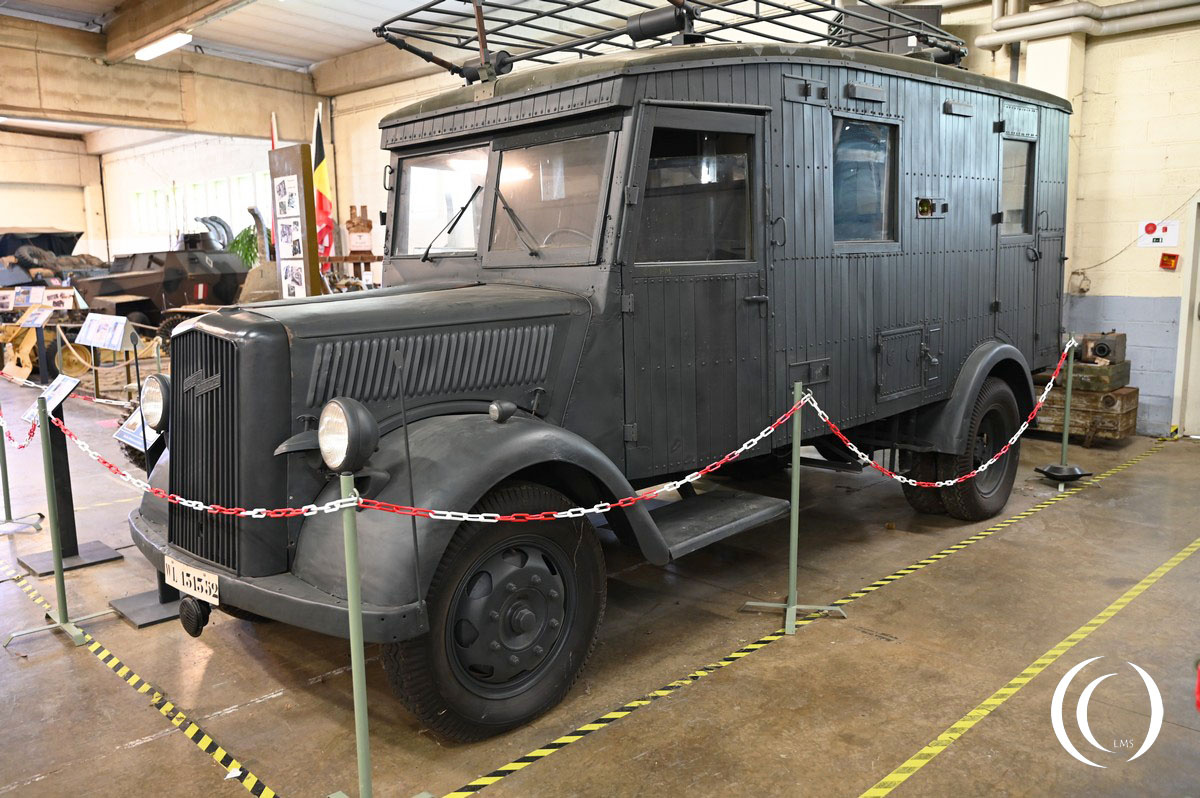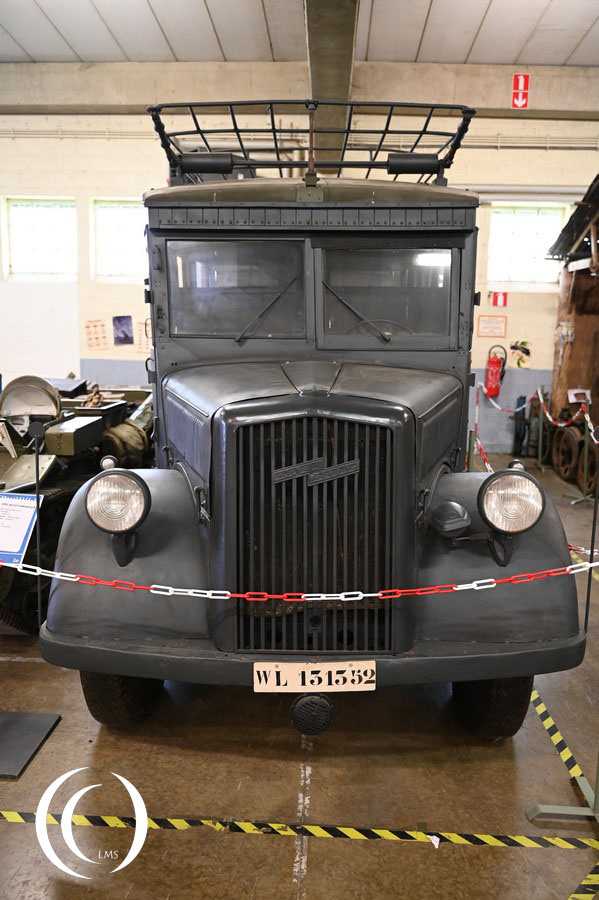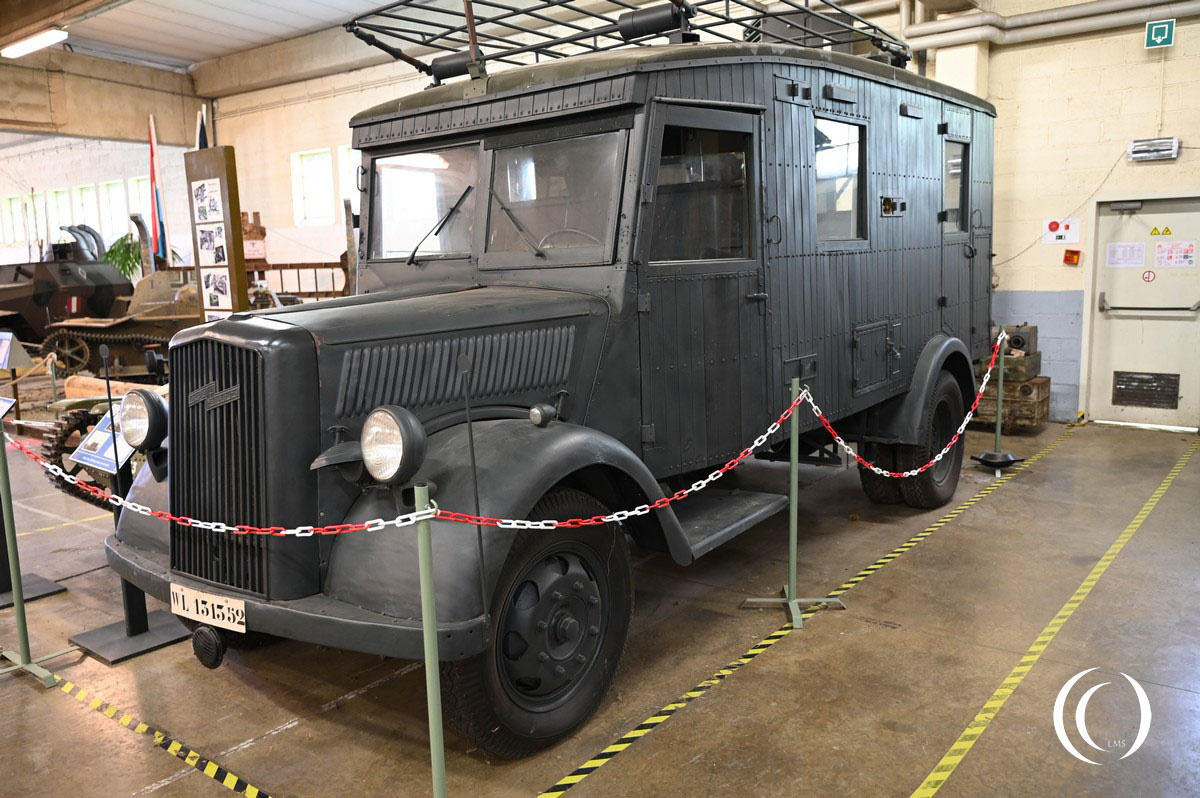
Sd.Kfz. 305 was the German designation for the Opel Blitz. This version, the Opel Blitz Funkkraftwagen was designated Sd.Kfz.305/17. The Germans named the superstructure on this version of the Opel Blitz an Einheitzkoffer which means it had a closed standardized superstructure. Trucks with this identical superstructure could be used for multiple purposes which can be referred back to the list of radio equipped trucks:
– Sd.Kfz. 305/15 Funksendekraftwagen: radio broadcast motor vehicle
– Sd.Kfz. 305/16 Funkkraftwagen: Radio motor vehicle
– Sd.Kfz. 305/17 Funkkraftwagen: radio motor vehicle
– Sd.Kfz. 305/18 Funkkraftwagen (Kzw./Lgw.): radio motor vehicle (SW/LW)
– Sd.Kfz. 305/19 Funkkraftwagen (Kzw.): radio motor vehicle (SW)
– Sd.Kfz. 305/20 Funkkraftwagen: radio motor vehicle
– Sd.Kfz. 305/21 Funkbeschickungskraftwagen: radio feeding motor vehicle
– Sd.Kfz. 305/22 Funkpeilkraftwagen: radio bearing motor vehicle
– Sd.Kfz. 305/23 Funkempfangs Kw./Horchfunkempfangs Kw./Funkbetriebs Kw: radio reception/interception radio reception/radio operation motor vehicle
– Sd.Kfz. 305/25 Funkmastkraftwagen: radio mast motor vehicle
– Sd.Kfz. 305/26 Radiosondekraftwagen: radiosonde motor vehicle
– Sd.Kfz. 305/27 Radiosondepeilkraftwagen: radiosonde bearing motor vehicle
– Sd.Kfz. 305/29 Ansteuerungssendekraftwagen: Approaching signal sending motor vehicle
The trucks differed probably only with their radio equipment and outer equipment which was used for each different purpose of the Opel Blitz like sending and receiving information and orders or searching forbidden radio equipment used by resistance groups.


This Opel Blitz, Opel Lighting, was used by a 4 man crew as a field radio broadcast unit to send and receive information and orders. The rack on top of the radio motor vehicle is part of the antenna. The Opel Blitz weighed 2100 kilograms and with its 6 cylinder engine it had a range of 315 kilometers.

